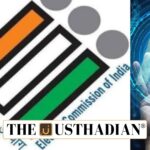India’s ageing population needs new answers
BHARAT India’s Initiative for Healthy and Resilient Ageing: India’s average lifespan has steadily increased, but living longer doesn’t always mean living better. There is a noticeable rise in conditions such as dementia and Parkinson’s disease, especially among the elderly. Yet, our understanding of ageing has long relied on Western research. This creates a gap in how we assess and treat age-related health issues in the Indian population.
Static GK fact: India’s senior citizen population is projected to surpass 300 million by 2050, demanding an urgent relook at elderly care systems.
The problem with foreign health standards
Many diagnostic references in India come from Western clinical data. As a result, people may be incorrectly diagnosed as deficient in nutrients like vitamin B12 or vitamin D, even if they are healthy by Indian standards. This can lead to:
- Misleading diagnoses
- Unsuitable medical interventions
- Missed chances for early detection of real issues
BHARAT project’s strategic goals
To close this gap, the Indian Institute of Science (IISc) launched the BHARAT study in 2023. This research is a part of the broader Longevity India Program and aims to create a scientific benchmark tailored specifically for Indians.
The study’s focus is to develop a detailed health baseline — called the Bharat Baseline — that reflects the ageing process in the Indian context.
Multi-dimensional data collection
To create this national health framework, BHARAT gathers extensive health information:
- Genetic indicators to understand inherited disease risks
- Protein and metabolism markers that reveal organ and system performance
- Environmental inputs, including air quality, diet, and lifestyle
- Socio-economic variables, such as access to hospitals, education, and income
Static GK Tip: IISc Bengaluru, one of India’s oldest and most respected research institutions, was founded in 1909 with support from J.N. Tata and Maharaja of Mysore.
How AI supports health innovation?
The vast quantity of data collected requires advanced tools. The BHARAT study uses Artificial Intelligence (AI) and machine learning to:
- Merge varied health data efficiently
- Spot unseen connections between ageing patterns
- Forecast age-related changes before physical symptoms arise
This tech-powered model allows for preventive healthcare planning at a scale never attempted before in India.
Key roadblocks in execution
1. Gathering a representative sample
India’s diversity means health norms vary widely by region, diet, and lifestyle. Finding healthy participants, especially older adults across regions, is a challenge.
2. Sustaining financial support
Such a complex project needs continuous backing from the government, private donors, and public health bodies.
3. Training AI with Indian-specific inputs
Global AI models often ignore local contexts. BHARAT ensures that its tools are trained with Indian datasets to prevent bias and misinterpretation.
A shift towards personalised Indian healthcare
The larger vision of BHARAT is to transform India’s medical system from reaction-based treatment to anticipatory care. With early insights, healthcare providers can suggest timely changes in lifestyle and monitor ageing more effectively.
Static GK fact: India faces a dual challenge — rising life expectancy combined with increasing non-communicable diseases like diabetes and hypertension.
The insights from this study can lead to customized medical strategies, better nutrition plans, and more accurate public health decisions — all aligned with India’s unique biological and environmental profile.
Static Usthadian Current Affairs Table
BHARAT India’s Initiative for Healthy and Resilient Ageing:
| Topic | Detail |
| Full form of BHARAT | Biomarkers of Healthy Aging, Resilience, Adversity, and Transitions |
| Launch year | 2023 |
| Launched by | Indian Institute of Science (IISc), Bengaluru |
| Program umbrella | Longevity India Program |
| Key focus | Establishing India-specific health baselines |
| Major tools used | Artificial Intelligence and Machine Learning |
| Data types collected | Genomic, proteomic, environmental, socio-economic |
| Key challenge | Sample diversity and long-term funding |
| Long-term goal | Preventive, personalised healthcare for Indian ageing population |
| Related age-related diseases | Parkinson’s, dementia, and chronic non-communicable diseases (NCDs) |








